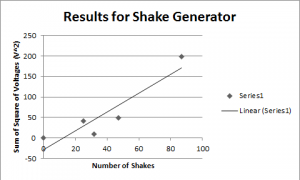The movie Pandora’s Promise is about nuclear energy and the environment. It was previously thought, by environmentalists, that nuclear energy was completely unsafe. Majority of environmental scientists have since changed their opinions on nuclear power. The movie follows a series of environmentalist while they discuss what changed their opinions on nuclear power.
Nuclear energy has a bad reputation due to a few different catastrophic events. The major problem that effected people’s opinions was Chernobyl, in the Ukraine. The entire city of Ivankiv Raion was evacuated in 1986, and for the most part remains abandoned to this day. There were only 28 deaths in the entire disaster, all due to radiation poisoning.
Another event that effected the reputation of nuclear power was Three Mile Island in Pennsylvania. Three Mile Island was only a partial melt down of the nuclear reactor, but there was a small over-reaction in the reactors system that caused extra steam to be released. There were no deaths or injuries sustained at Three Mile Island, but the event was so heavily broadcast that it lead to serious restrictions on nuclear energy in the United States and also a fear of nuclear energy by the majority of the public. That caused a lot of nuclear plants to shut down, and stalled new plants to be built.
The third event that changed opinions on nuclear power was Fukushima nuclear disaster. That was the result of an tsunami in Japan, that occurred in 2011. The tsunami caused the plants to go into equipment failure, and radiation escaped the plant. The area where the plant was located is no longer inhabitable, because of the radiation. The plant was in a poorly planned location, because it was in a tectonically active area and when placing nuclear plants the most important part of the location should be stability.
People’s opinions on nuclear energy have been affected deeply by these events, but they do not truly reflect on the abilities of nuclear. Nuclear power results in considerably less waste than fossil fuels do. The biggest problem is the waste from nuclear has to be away from society for 100,000+ years, and there has not yet been a scientifically sound way to dispose of the waste.
The movie has an important lesson for everyone watching because it shows the evolution of environmental science, people went from thinking nuclear was unsafe to realizing it scientifically made sense because it causes less waste. It also gives reason for nuclear, and explains that there are so few problems with the safety and that people should ignore the media’s ideas because there are constant negative opinions on nuclear power that have no scientific backing.
Overall I would suggest the movie to any interested party, because it gives so many reasons to support nuclear power. It also presents the information in an interesting way that made the movie enjoyable to watch. The movie showcases environmental science, while disproving misconceptions.

